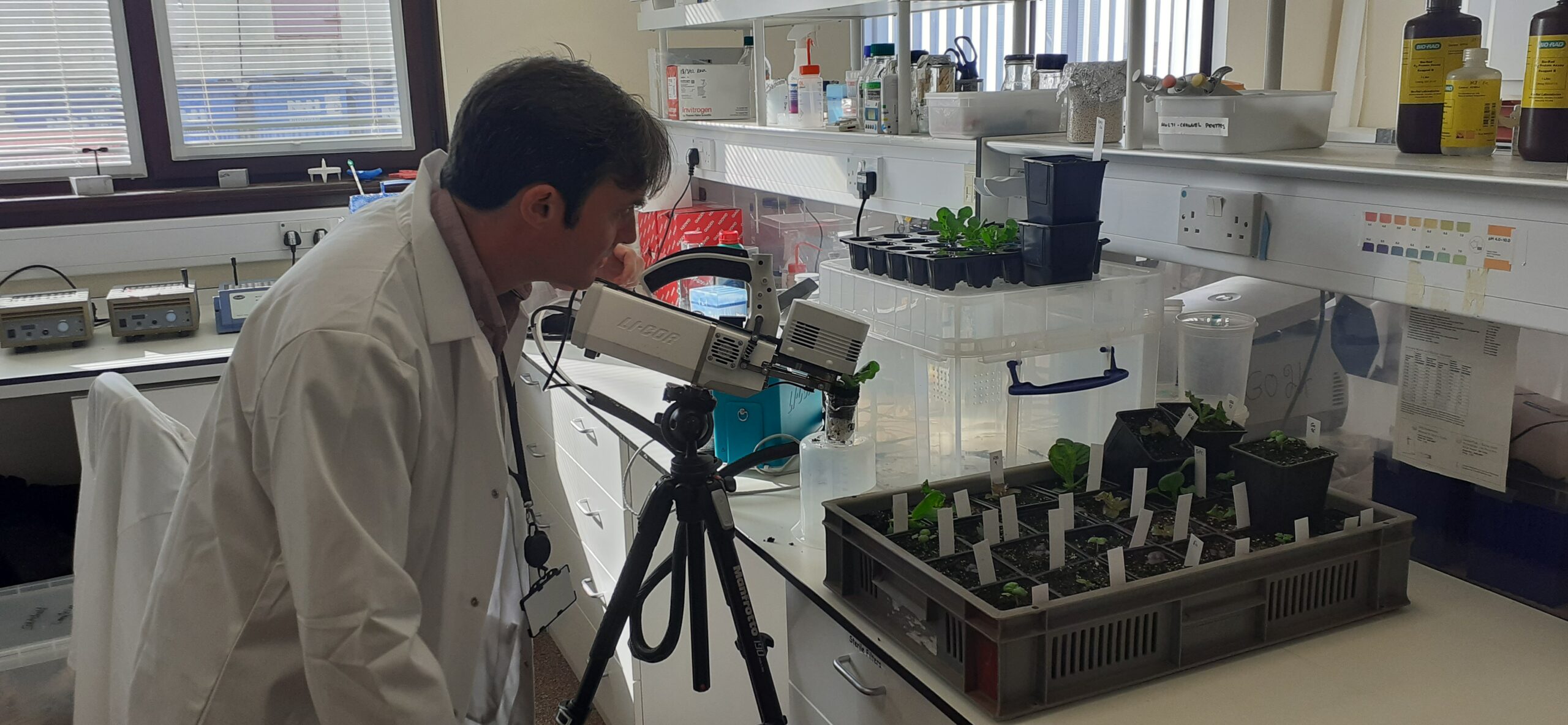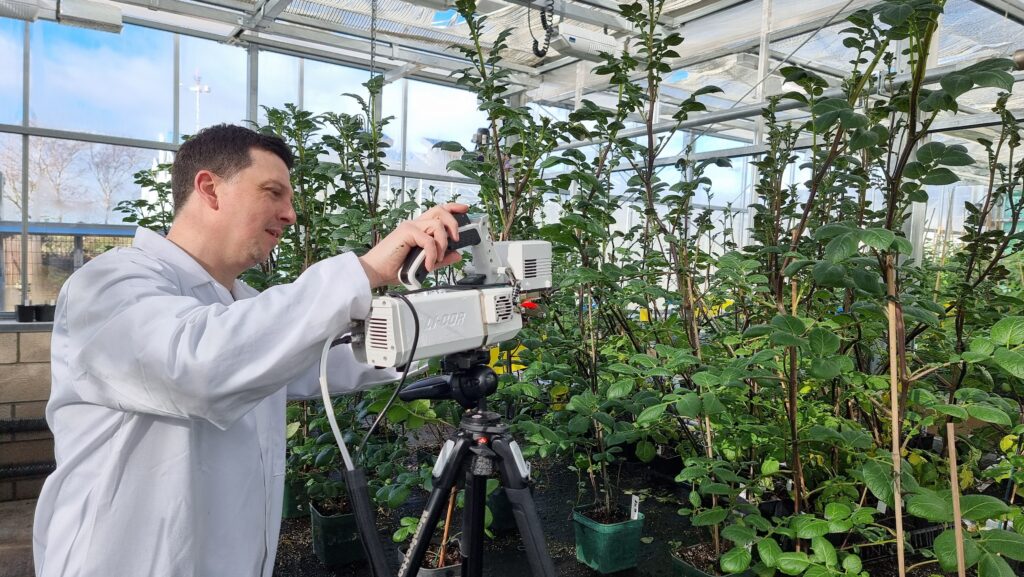Scientists at The James Hutton Institute identify key factor regulating potato tuber initiation
Scientists, led by Dr Rob Hancock, Deputy Director of the Hutton’s Advanced Plant Growth Centre, have been working as part of a European consortium to develop tools for the development of multi-stress tolerant potatoes and have uncovered a key factor regulating the process of producing tubers.
Potato tuberisation begins when signals from leaves are translocated to underground stems known as stolons, causing a transition from stolon extension to tuber development.
The developing tuber becomes a major reservoir for starch which is formed from sugars made in leaves by photosynthesis and translocated via vessels known as the phleom to the roots and tubers.
The transition from stolon growth to tuber development requires a massive increase in the availability of sugars. 25 years ago, Hutton scientists demonstrated that this transition was associated with a shift in the way sugars were unloaded from the phloem into the developing tuber.
The mechanism by which this transition occurs was, until now, unknown.
Dr Hancock was, in fact, part of the team that identified the switch in phloem unloading in potato tubers almost 25 years ago and says it is a source of great satisfaction to have identified a potential candidate which orchestrates that shift. He said, “This finding provides an opportunity to greatly extend the geographic range in which potatoes can be grown providing a calorie dense crop for growing global populations.”
The research found that a member of the germin family of proteins, is key.
Dr Hancock explained, “Our work showed that one of these genes was directly activated by the protein complex that regulates the switch from stolon growth to tuber development.
“Germins are a large class of proteins that have ill-defined functions so their role in tuberisation was unexpected.”
“Our work showed that one of these genes was directly activated by the protein complex that regulates the switch from stolon growth to tuber development. Germins are a large class of proteins that have ill-defined functions so their role in tuberisation was unexpected.”
Dr Rob Hancock, The James Hutton Institute

Artificial manipulation of the activity of the germin3 gene showed an earlier date of tuberisation and an increase in tuber yield, as well as robust growth, early flowering and vigorous tuber sprouting. The gene activation was increased by starving plants through keeping them in the dark, while providing sugars in the growth medium had the opposite effect, suggesting that increased sugar demand at the onset of tuberisation might result in the activation of germin3.
Further research showed that having the germin3 protein in cells allowed them to move to adjacent cells, indicating that germin3 promotes potato tuberisation by facilitating the opening of pores, allowing an influx of sugars for tuber bulking.
This discovery potentially solves the 25-year-old mystery of how the transition from transferring sugars using specific transporters to transferring the sugars directly with the phloem, which massively increases the capacity for sugar delivery, occurs.
Because germin3 acts downstream of leaf tuberisation signals, which are temperature sensitive, this finding presents an opportunity for developing potato cultivars that are able to form tubers at higher temperatures.
By-passing temperature sensitivity in this way could be a route to food security if potatoes are able to grow in areas of the world in which they currently can’t survive.
Dr Mark Taylor, who initiated the work but has now retired said, “These experiments suggest that germins regulate not only tuberisation but also other plant developmental processes such as flowering and dormancy providing opportunities to manipulate multiple aspects of development and paving the way for yield increases in a wide range of crops.”
More information can be found here: https://onlinelibrary.wiley.com/doi/full/10.1111/tpj.70186

